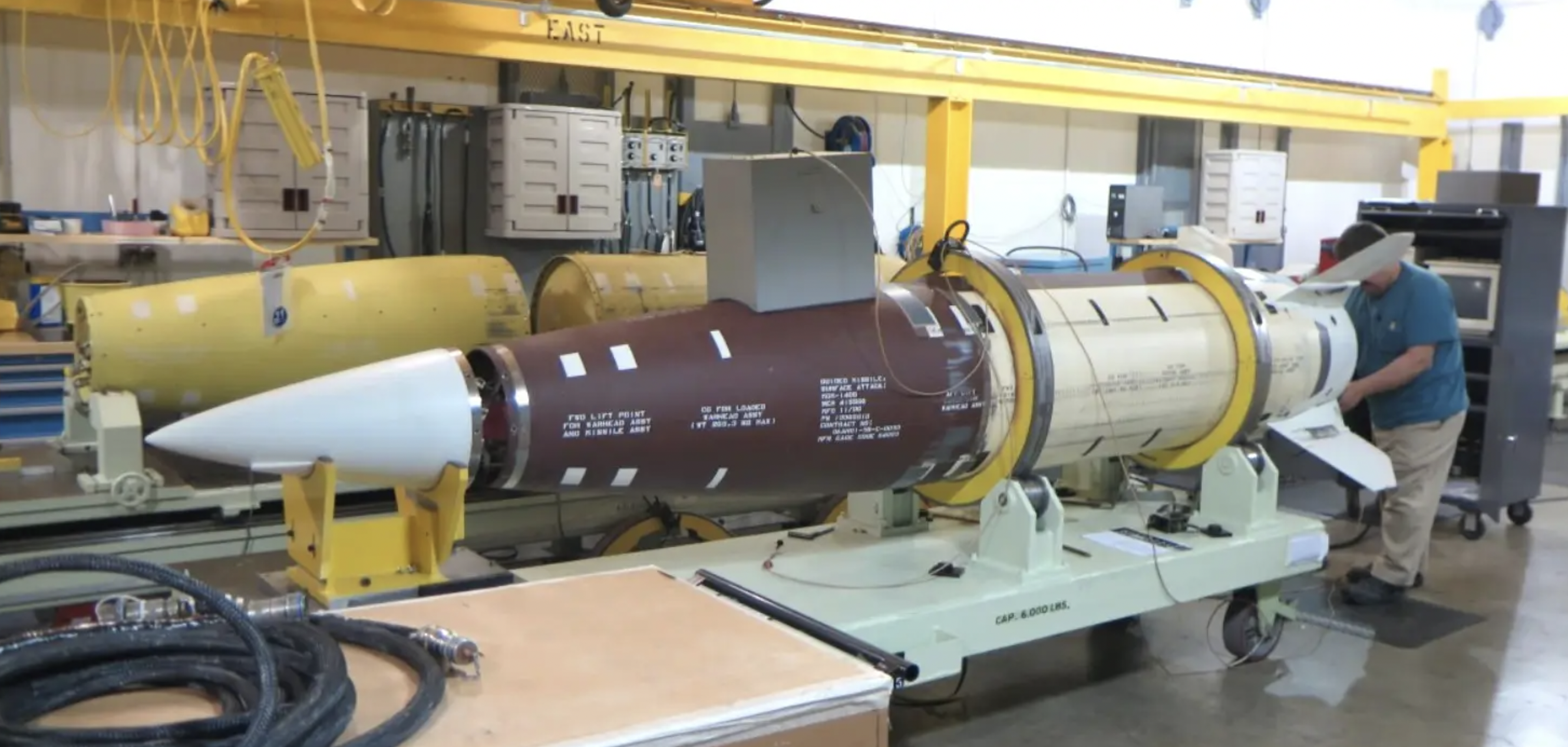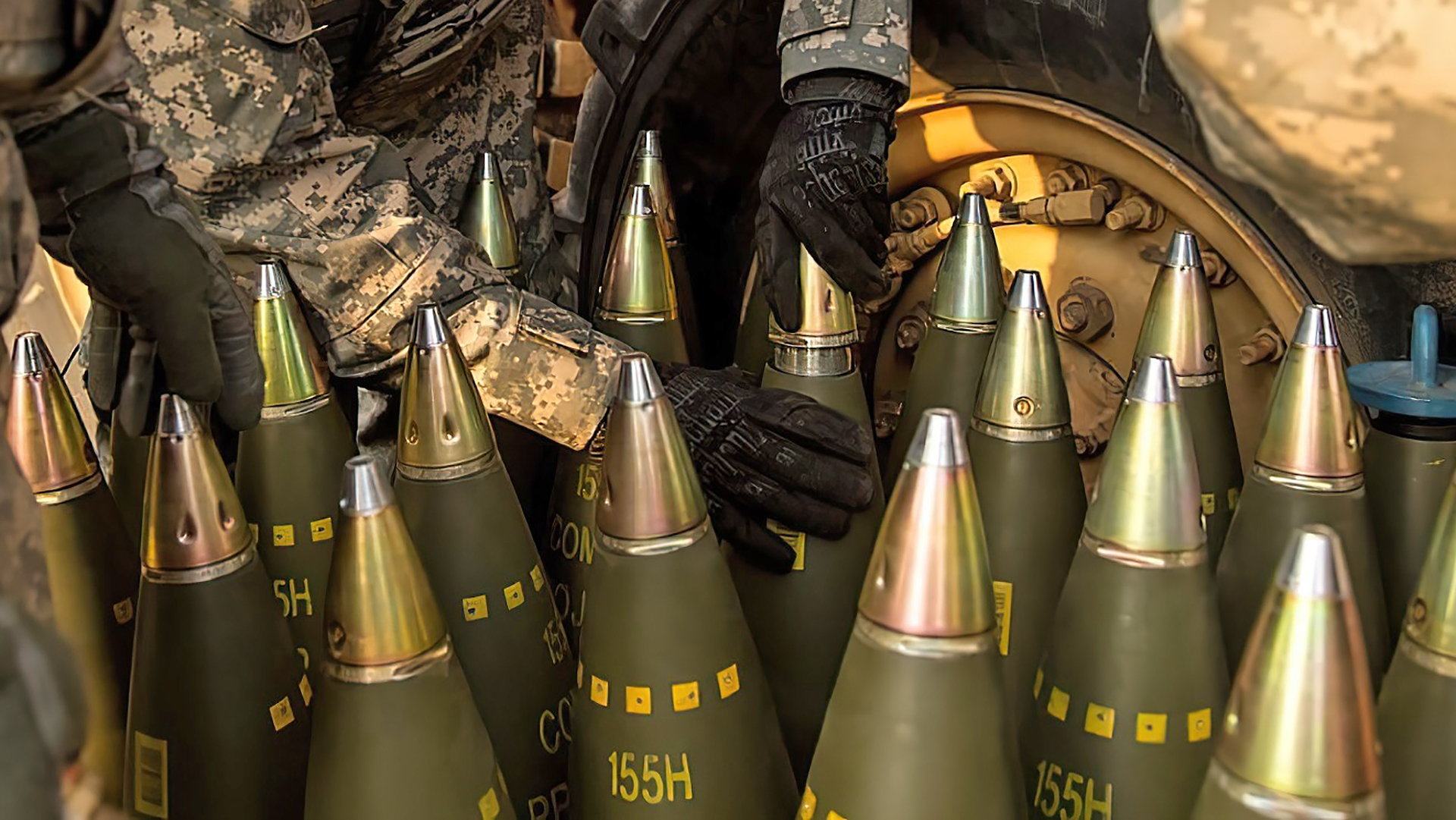There is no more money to provide military assistance to Ukraine, White House National Security Council spokesman John Kirby told reporters Wednesday.
“We have given now Ukraine the last security assistance package that we have funds to support right before New Year’s, right after Christmas,” said Kirby. “And we’ve got to get support from Congress so we can continue to do that.”
The last tranche of aid, the 54th Presidential Drawdown Authority package, was announced on Dec. 27 and valued at up to $250 million. It included, among other things, additional munitions for National Advanced Surface-to-Air Missiles Systems, or NASAMS as well as more Guided Multiple Launch Rocket Systems (GMLRS) for U.S. supplied M270 Multiple Launch Rocket System (MLRS).

Earlier this year, President Joe Biden requested a $106 billion supplemental spending package to be split between Ukraine and Israel, but also including funds to boost competition with China in the Indo-Pacific, as well as security along the U.S. border with Mexico. Congress has not passed it.
Asked if weapons shipments to Ukraine will stop should there be no congressional action, Kirby said “they would have to…The President signed out the last security assistance package for which we had replenishment authority funds. That’s it. We need the supplemental passed so that we can provide additional security assistance to Ukraine.”
“Absent supplemental funding, there’s no other magical pot to dip into to try to get support for Ukraine,” he added.
Last month, however, the Pentagon’s top spokesman said there was about $4.4 billion left in replenishment funds. To spend that on Ukraine, however, is a “tough choice,” said Air Force Maj. Gen. Pat Ryder.
“And so clearly as we get close to the remaining replenishment funds, questions are do we exceed that and certainly we do retain the option to spend the full [$4.4 billion], but these are tough choices because ultimately at the end of the day we start to have to make decisions about our own readiness and about our ability to continue to support Ukraine in the way they need to be supported on the battlefield,” Ryder said.
Cutting off aid would be disastrous for Ukraine and the U.S., ISW argued late last month.
“Allowing Russia to win its war in Ukraine would be a self-imposed strategic defeat for the U.S.” ISW posited. “The U.S. would face the risk of a larger and costlier war in Europe. The U.S. would face the worst threat from Russia since the collapse of the Soviet Union.”
“Most dangerous of all, however, U.S. adversaries would learn that they can break America’s will to act in support of its strategic interests. If Russia wins in Ukraine because of the collapse of Western aid, it will be because Russia has managed to shape American’s understanding of reality such that the U.S. willingly chooses to act against its interests and values without realizing that it is doing so.”
Congress returns from its holiday recess next week. Though there is bipartisan consensus to send Ukraine and Israel the funding Biden requested, Republican leaders have indicated that they want his administration to agree to permanent immigration policy changes in exchange for their votes.
Whether this logjam breaks remains to be seen.
Before diving into more developments from the conflict in Ukraine, The War Zone readers can review our previous coverage here.
The Latest
Little has changed on the battlefield, with Russia continuing to make small advances in Donetsk Oblast.
Here are some key takeaways from the latest Institute for the Study of War assessment:
- Russian forces made confirmed advances near Avdiivka and Donetsk City as positional engagements continued along the entire line of contact.
- The Donetsk People’s Republic’s (DNR) “Vostok” Battalion stated on January 3 that the unit will continue to operate subordinated to Rosgvardia and will not be impacted by the Russian military’s reported dissolution of the “Kaskad” operational combat tactical formation of the DNR’s Internal Affairs Ministry (MVD).
- Russian authorities continue efforts to integrate occupied Ukraine into Russia using infrastructure projects and social outreach programs.
The White House and Pentagon on Wednesday declined to talk about the status of Army Tactical Missile System (ATACMS) short-range ballistic missiles possibly destined for destruction. According to a recent Newsweek story, hundreds of the munitions have exceeded their lifecycle and will be destroyed instead of being sent to Ukraine.
The ATACMS are “excellent lethal, precision-guided cluster weapons” scheduled for destruction at “significant” expense to American taxpayers, Daniel Rice, a former special adviser to Ukraine’s lead commander, General Valery Zaluzhny, told the publication.

They could be shipped off to Ukraine and used “very effectively” against Moscow’s forces, he told Newsweek, adding that there are no concerns about these weapons aging out of being useful.
“They work,” he added. “All weapons are eventually replaced by better, more lethal, more cost-effective weapons,” he said, but they could make all the difference for Ukraine’s war effort.
As we previously reported, Ukraine has used its limited ATACMS strikes to great effect, including on two Russian-occupied airfields in eastern Ukraine. Those strikes destroyed a large number of helicopters and other materiel. In doing so, they largely rolled-back the rotary-wing threat.
The U.S. so far has provided about two dozen ATACMS to Ukraine, all with cluster munition warheads that can reach about 100 miles. You can read more about ATACMS could offer Ukraine in our previous reporting here.
We cannot verify Newsweek’s report on the disposition of the missiles in question, and, in particular, if some are bound to be destroyed and if those are even able to be used safely in their current state.
Norway will send two F-16 fighters to Denmark to contribute to the training of Ukrainian pilots on the jets, Norway’s defense minister said Wednesday.
F-16s have been on Ukraine’s wish list as the country seeks to boost its air force in the war with Russia, and Norway last year said it would join Denmark, the Netherlands and others in donating aircraft.
Norway has already sent 10 instructors to Denmark to aid the education of Ukrainian pilots, Defense Minister Bjoern Arild Gram said in a statement.
The twice-attacked Kerch Bridge, Vladimir Putin’s prized $4 billion span linking Russia and the Crimean peninsula it has occupied since 2014, is as good as gone, Vasyl Malyuk, head of Ukraine’s security service (SBU) has proclaimed.
“There will be many surprises to come. And not only the Crimean bridge. The bridge is doomed,” Malyuk emphasized in a 30 minute video.
Malyuk’s statement echoes something Ukrainian Lt. Gen. Kyrylo Budanov, head of the Defense Intelligence Directorate, told us during an exclusive interview in his hotel when he visited Washington D.C. last September
KB: “It’s not a question of will we strike or won’t we strike. We’re doing that regularly so we will finish it. It’s just an issue of time,” he told us.
TWZ: And what will Putin do?
KB: He’ll get upset once again. What can he do?
Speaking of Budanov, he personally greeted returning Ukrainian prisoners of war who came home during the largest such exchange since Russia launched its full-on invasion. About 230 Ukrainians were part of that exchange.
While much has been made of advanced air defense systems being given to Ukraine like Patriots, old Soviet-era equipment like the twin-barrel 23mm ZU-23-2 autocannon and small arms are still being used, as you can see in this video below. The video shows a ‘drone hunter’ team in action.
Stanislav Silchenkov, who was 18 when he died on Nov. 17 at Synkivka in the Kharkiv region, is claimed to be the youngest Russian to die in Ukraine since the full-on invasion began. According to his mother he had signed a contract to join the Russian forces only 10 weeks before.
And finally, reminiscent of the pink-hued submarine USS Sea Tiger in the movie Operation Petticoat, video of a U.S.-provided Humvee painted in a shade of red rumbling through Ukraine has appeared on social media.
That’s it for now. We’ll update this story when there is more news to report about Ukraine.
Contact the author: howard@thewarzone.com
